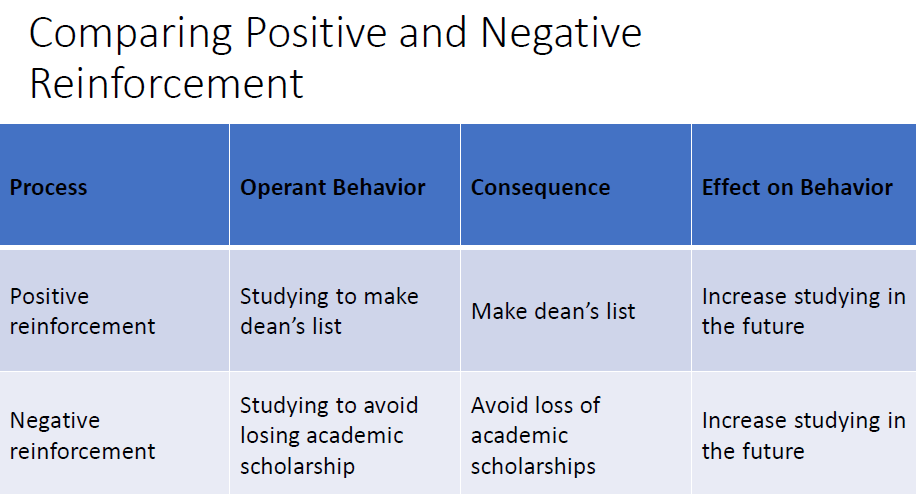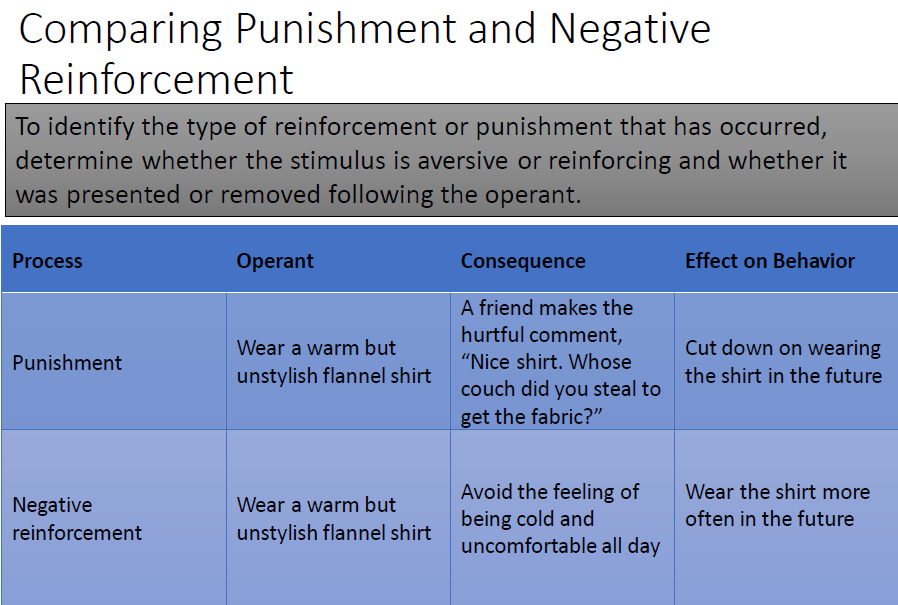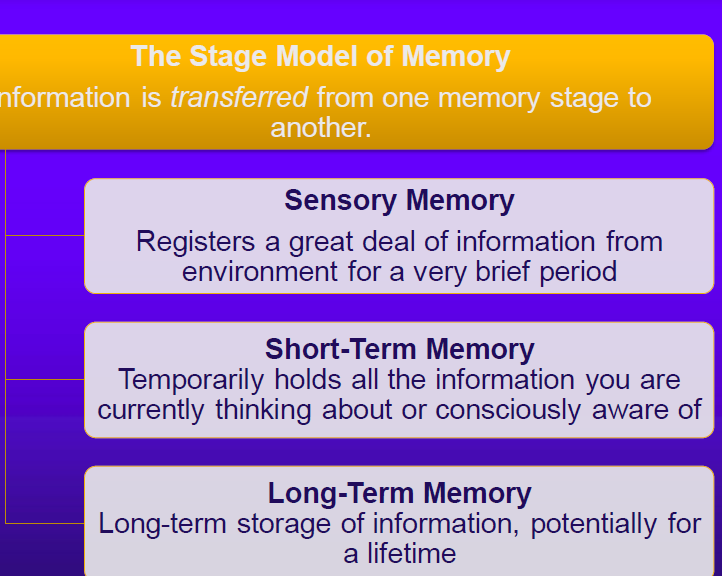Week 5 - Week 8
Learning & Conditional
Classical Learning Studies
Pavlovian (Classical) Conditioning with Dog salivation
Watson’s Little Albert
BF Skinner’s Behavioral (Operant) Conditioning
Bandura’s Bobo Doll Experiment & (Observational) Learning
Conditioning
Associating one thing with something else
E.g. Drinking beer and getting drunk (or throwing up)
1) Acquisition
Initial learning of stimulus - response relationship
2) Extinction
Diminishing of conditioned (trained) response
3) Spontaneous recovery
Reappearance (after rest period) of extinguished conditioned response
4) Generalization
Associating similar Unconditional stimuli
E.g. How you know a cell & other stimuli ring OR how dogs salivate to any number of stimuli
5) Discrimination
Distinguishing Condotional stimulus from irrelevant stimuli
Classical Conditioning (Ivan Pavlov and Watson)
Classical conditioning
Basic learning process that involves repeatedly pairing a neutral stimulus with a response-producing stimulus until the neutral stimulus elicits the same response
Discovered by Ivan Pavlov while he was studying digestion
Association of one stimulus with another
Unconditional stimulus (UCS)
e.g. Food; Loud noise
Unconditional response (UCR)
e.g. Salivation; Startle reflex (fear)
Conditional stimulus (CS)
e.g. Bell/Rat, which comes before food/noise
Result - Just the (CS) eventually causes (CR)
Bell causes salivation; rat causes fear
John B. Watson
Founded new approach called behaviorism
Advocated scientific study of objectively observed behavior
Believed all human behavior is result of conditioning and learning
Conducted controversial “Case of Little Albert”
Classical Conditioning: Applications
Avoiding addiction cues:
Addicts are encouraged to stay away from people and situations linked to (or which augment) their addictions
Counter-conditioning:
Aversive conditioning
Associating tastes or drugs with nausea
Often (quickly) learn a new behavior, like taste aversion
Desensitization
Associating pleasant feelings with anxiety triggering stimuli
Try a peppermint (pleasant) before/during the exam (an anxiety instigator)
Operant Conditioning (Skinner) - deals with the learning of active, voluntary behaviors that are shaped and maintained by their consequences
Thorndike
First psychologist to systematically investigate animal learning and how voluntary behaviors are influenced
Trial and error
Law of effect
Responses followed by a satisfying effect becomes strengthened and are more likely to result in a particular situation
Responses followed by a dissatisfying effect are weakened and less likely to occur in a particular situation
B. F. Skinner
Believed that psychology should restrict itself to studying only phenomena that could be objectively measured and verified—outwardly observable behavior and environmental events
Proposed that internal thoughts, beliefs, emotions, or motives could not be used to explain behavior
Coined the term operant to describe any “active” behavior that operates upon the environment to generate consequences
Invented to Skinner box
Association of behaviors with consequences
shaping
Building on existing behaviors to achieve goal
Pigeons pecking, Dogs barking, etc.
Reinforcement
INCREASES likelihood of response
Positive Reinforcement: Adding a positive stimulus (e.g. Treat)
Positive: Response is followed by the addition of a reinforcing stimulus, increasing the likelihood that the response will be repeated in similar situations
Negative Reinforcement: Removing an aversive stimulus (e.g. Pain, removing a low grade)
Negative: Response results in the removal of, avoidance of, or escape from a punishing stimulus, increasing the likelihood that the response will be repeated in similar situations
Punishment
Process in which a behavior is followed by an aversive consequence that decreases the likelihood of a behavior’s being repeated
(Punishment and negative reinforcement are often confused)
Opposite of reinforcement
Decreases likelihood of a behavior occurring
Two Types of punishment identified by Skinner
Punishment by application: a situation in which an operant is followed by presentation of or addition of an aversive stimulus; also called positive punishment
Punishment by removal: a situation in which an operant is followed by the removal or subtraction of a reinforcing stimulus; also called negative punishment
Utilizing Operant Conditioning
Children
Reinforce good behaviors
Ignore whining
Move misbehaving child away from reinforcing stimuli
Ourselves
State your goals
Monitor your behavior
Reinforce your behavior
Learning cont.
Reinforcers
Primary - Innately satisfying “rewards”
Secondary - Learned (associated with rewards)
Over-Justification
Too much reward can be bad
Decreases motivation (e.g. being paid to play)
Latent Learning
Learning can occur without reinforcement / training
E.g. Mental maps: You “learn” to find your way around
Reinforcement
Primary reinforcer: Stimulus or event that is naturally or inherently reinforcing for a given species, such as food, water, or other biological necessities
Secondary (conditioned) reinforcer: Stimulus or event that has acquired reinforcing value by being associated with a primary reinforcer
Cognitive & Learning
Learned Helplessness (Seligman)
Learned helplessness is the phenomenon in which exposure to inescapable and uncontrollable aversive events produces passive behavior.
The cognitive expectation that behavior would have no effect on the environment causes a person or animal to become passive.
This is shown when researchers study behavior, athletic performance, and psychological disorders such as depression and its management.



Memory & Memory Loss
Memory involves three fundamental processes
Encoding: Transforming information into a form that can be entered and retained by the memory system
storage: Retaining information in memory so that it can be used at a later time
Retrieval: Recovering stored information for conscious awareness
Ways to improve your memory
Pay attention
Minimize distractions @ encoding and retrieval
Proactive vs. Retroactive interference
Practice (repeat, rehearse, reason)
Avoid memory decay; Savings in relearning
Maximize use of encoding strategies such as chunking, acronyms, semantics, and imagery
Make it meaningful to you
Types of Sensory Memory
Visual sensory memory is sometimes referred to as iconic memory because it is the brief memory of an image, or icon.
Duration: Approximately ¼ to ½ a second
Auditory sensory memory is sometimes referred to as echoic memory, meaning a brief memory that is like an echo.
Lasts up to three or four seconds
Short-Term Working Memory: The Work of Consciousness
STM provides temporary storage for information transferred from sensory and long-term memory.
Duration: About 20 seconds
Can be retained longer through maintenance rehearsal
Mental or verbal repetition of information
Information loss may be due to decay or interference from new or competing information
Capacity
Described by George Miller as “The Magical Number Seven, Plus or Minus Two”
Can be increased by chunking; use maintenance rehearsal to encode
Current research suggests that the true “magical number” is four plus or minus one when chunking not an option
Long-Term Memory
Any information stored longer than the 20-second duration of short-term memory.
Abbreviated as LTM
Unlimited amount of information can be stored in long-term memory
LTM has different memory systems
Long-term memories can last a lifetime
Amount of information that can be held is limitless
Memory Techniques
Enhance your memory via encoding techniques called Mnemonics:
Chunking
Imagery
Acronyms
Study repeatedly
Rehearse & actively think about material
Refresh memory by using retrieval cues
Minimize interference
Test knowledge to rehearse & check learning
Repeat, Rehearse, Reason, Remember

